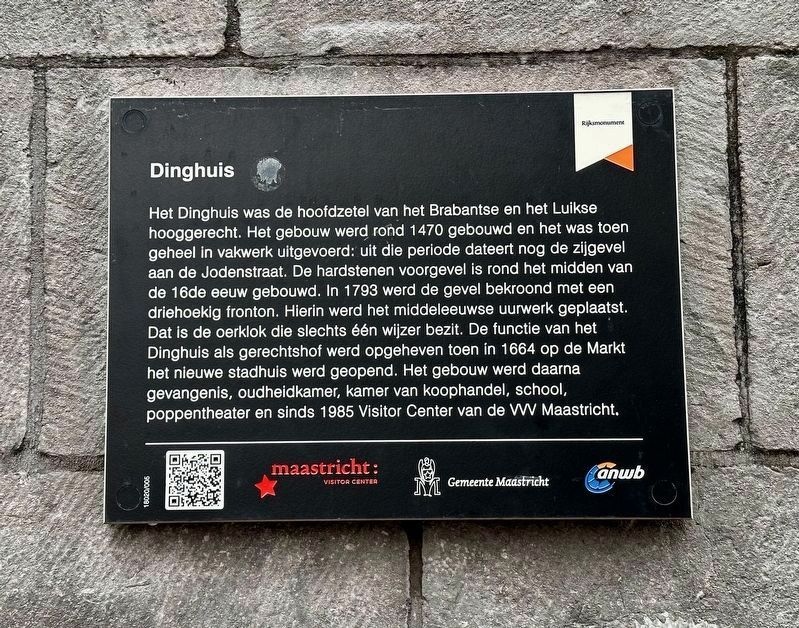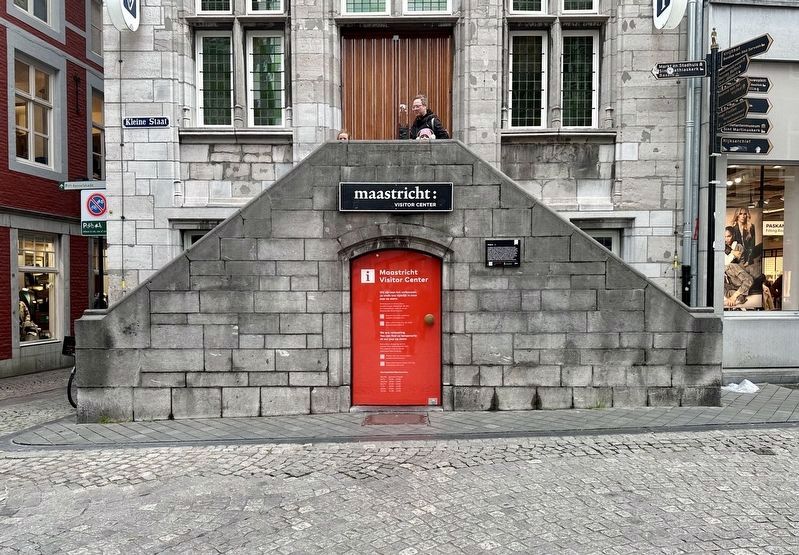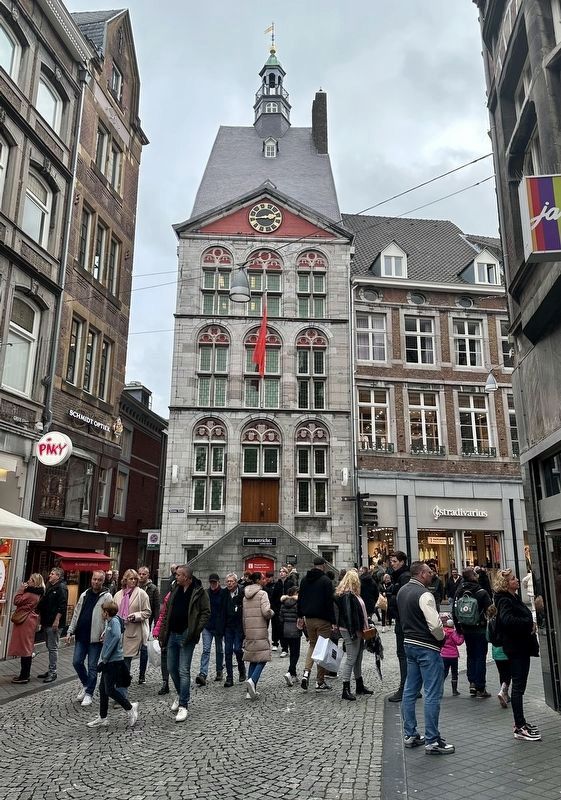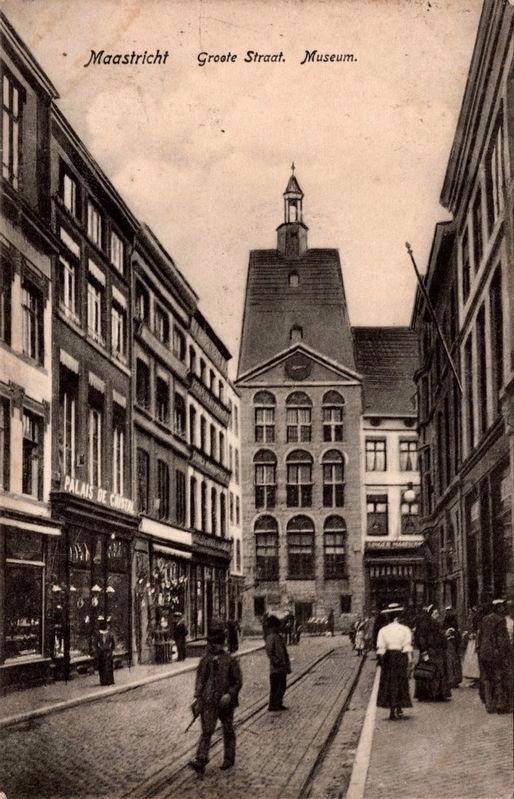Centre in Maastricht, Limburg, Netherlands — Northwestern Europe
Dinghuis / Ding House
— Rijksmonument —
The Ding House was the headquarters of Brabant and Liège high court. The building was built around 1470 and it was then entirely of half-timbered construction: the side facade on Jodenstraat still dates from that period. The bluestone facade was built around the middle of the 16th century. In 1793 the facade was given a triangular pediment. The medieval clock was placed here - a primitive clock having only one hand. The use of the Ding House as a court ended in 1664 when the new city hall was opened on the Market Square. The building afterwards served as a prison, antiquities room, chamber of commerce, school, puppet theater, and since 1985 as the Visitor Center of the Maastricht Tourist Office.
Erected by maastricht: Visitor Center, Gemeente Maastricht, ANWB.
Topics. This historical marker is listed in these topic lists: Architecture • Education • Industry & Commerce • Law Enforcement. A significant historical year for this entry is 1470.
Location. 50° 50.992′ N, 5° 41.555′ E. Marker is in Maastricht, Limburg. It is in Centre. Marker is on Kleine Staat, on the right when traveling north. Touch for map. Marker is at or near this postal address: Kleine Staat 1, Maastricht, Limburg 6211 EE, Netherlands. Touch for directions.
Other nearby markers. At least 8 other markers are within walking distance of this marker. Dominicanenkerk / Dominican Church (about 210 meters away, measured in a direct line); Eclectic Store-Residence (about 240 meters away); “Old Hickory” Division Memorial (approx. 0.3 kilometers away); Onze Lievevrouwebasiliek / Basilica of Our Lady (approx. 0.3 kilometers away); Spaans Gouvernement / Spanish Governate (approx. 0.3 kilometers away); Generaalshuis / Generals House (approx. 0.3 kilometers away); Nicolas Beaurieux (approx. 0.3 kilometers away); Sint Servaasbrug / Saint Servaas Bridge May 10, 1940 Memorial (approx. 0.3 kilometers away). Touch for a list and map of all markers in Maastricht.
Also see . . . Dinghuis (Wikipedia).
Excerpt: The Dinghuis (Ding House) is a building in downtown Maastricht, Netherlands, constructed at the end of the 15th century. (Ding is the Dutch name for the governing assembly known in most Germanic languages as a thing.)(Submitted on October 26, 2023.)
The building was constructed in the gothic style of architecture. The northern façade, built around 1470, is timber-framed, and the main façade, built of Namur stone, has a pediment containing a grand clock face. At the top of the steeply sloped roof is a tower that was once used as a lookout.
The Dinghuis served mainly administrative and judicial functions (a ding/thing being a judicial assembly), and its cellars contained gaols for holding prisoners. In 1713, the Dinghuis also served as a theater. Today, it is home to the town's visitor center.
Credits. This page was last revised on December 31, 2023. It was originally submitted on October 26, 2023, by Andrew Ruppenstein of Lamorinda, California. This page has been viewed 51 times since then and 9 times this year. Photos: 1, 2, 3, 4. submitted on October 26, 2023, by Andrew Ruppenstein of Lamorinda, California.



